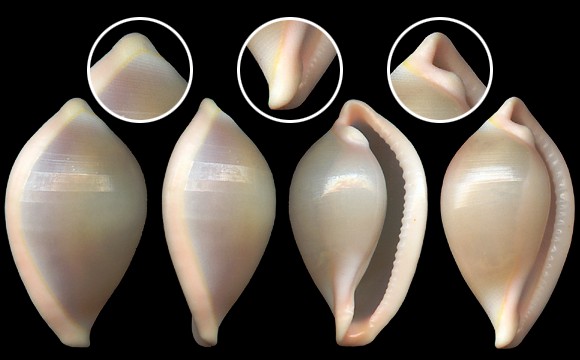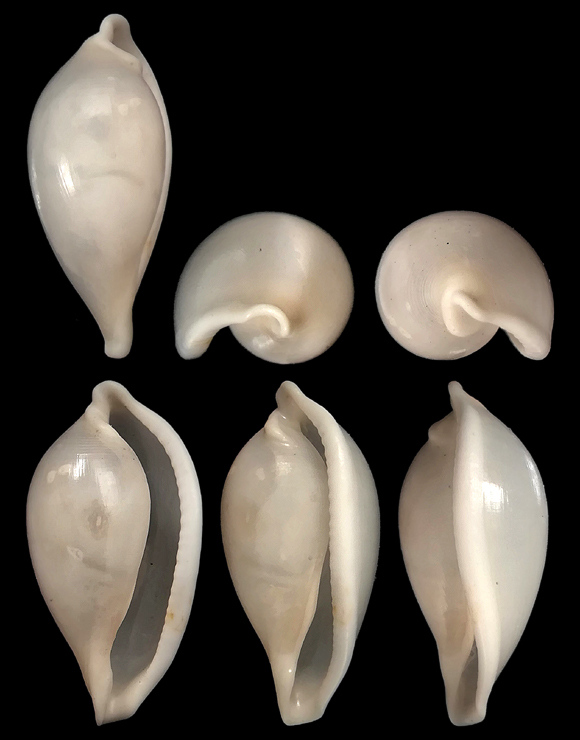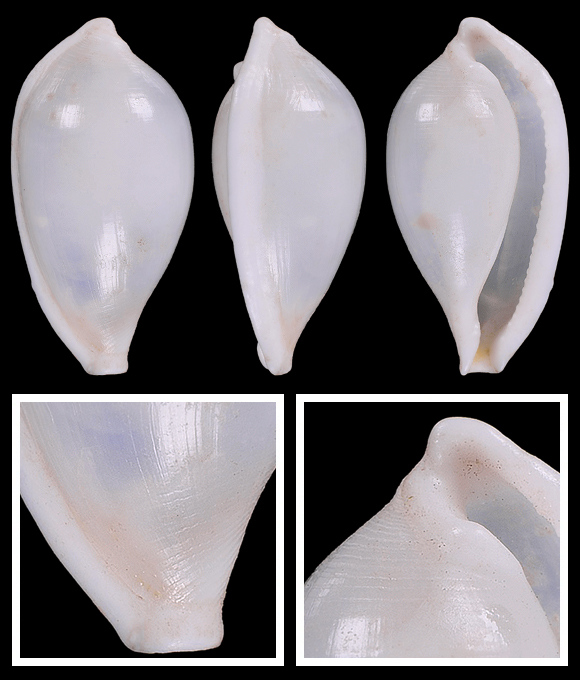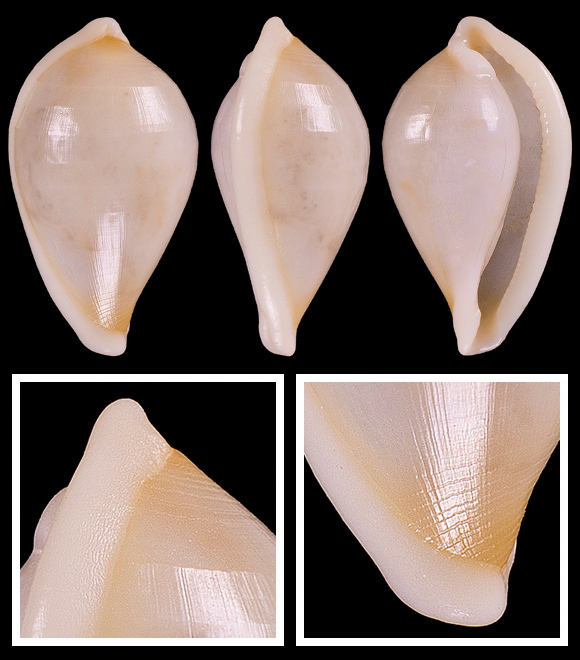
Predator on Polyps in the circalittoral and the continental shelf. Rarely found in shallower waters.
Original taxon: Ovulum adriaticum.
« Shell oblong-oval, rather ventricose; somewhat acuminated at both extremities, pale flesh colour, hyaline; margin of the outer lip narrow, denticulated on the inside upper end of the columella with one oblique plait; lower end somewhat flattened, vdth a thickened internal margin. » – G. B. Sowerby: “On the recent species of the genus Ovulum”, Zoological Journal vol. 4, London 1828, p.150.
Synonyms: haliotidea,virginea…
250m deep, Málaga, Andalucia, S. Spain. 19mm.

« The shell is ovate, fragile and convoluted; the spire is completely covered. The aperture is narrow and elongated, with a canal at both ends. A spiral thread-like furrow is present in the upper canal, while the outer surface of the lower canal is covered by very faint striae. The outer lip is clearly margined with a prominent varix; unevenly spaced numerous fine labial teeth are seen on the inner edge of the outer lip. The inner lip is smooth, with a columellar callus well-extended towards the whorl; the columellar callus is defined with an undulated line. A prominent tooth-like projection is seen on the columellar callus, near the upper canal. Although the dorsal surface of the shell appears to be almost smooth, very fine spiral striae, which can only be seen with a lens, are present near the canals. The shell is uniformly whitish. The animal is pale orange. » – Kabasakal, Karhan & Kalkan: “First record of Aperiovula adriatica (G.B. Sowerby I, 1828) in the Sea of Marmara, Turkey”, Basteria vol. 70, 2006).
120-140m deep, central Adriatic. 21mm.
Original pictures provided by N. Lete (HR).
– (CC BY-NC-SA) –

